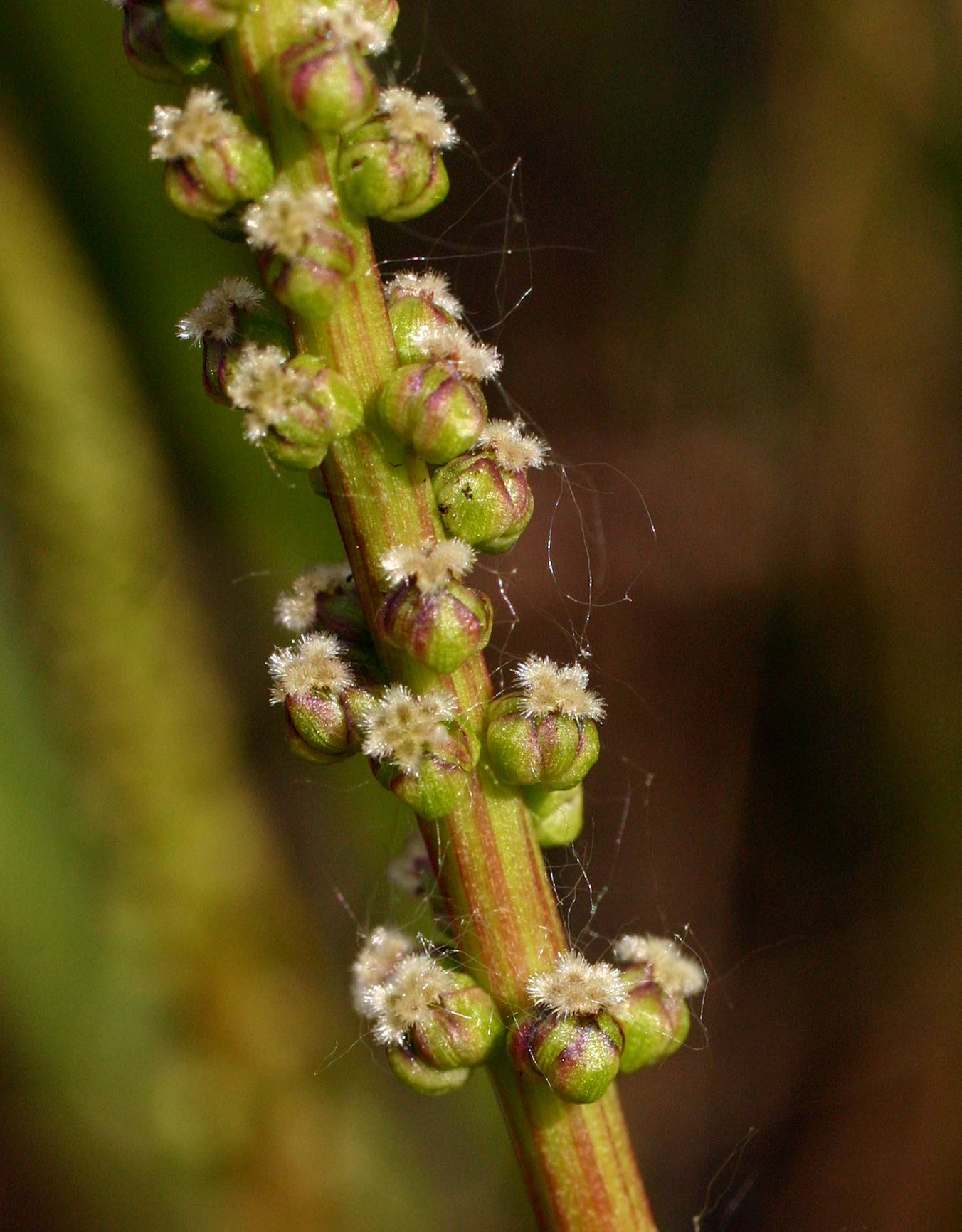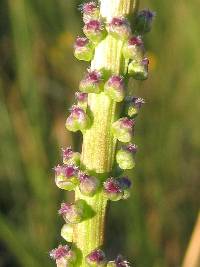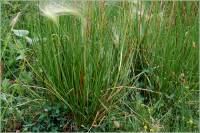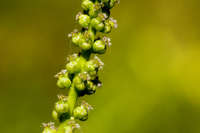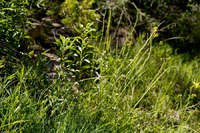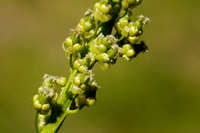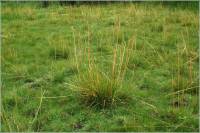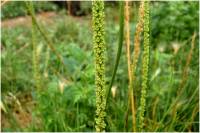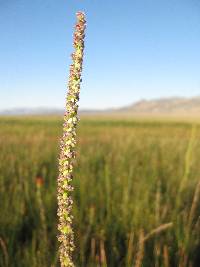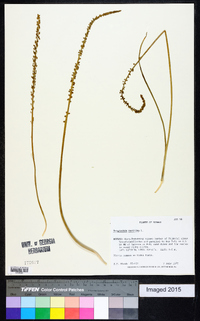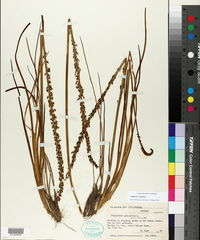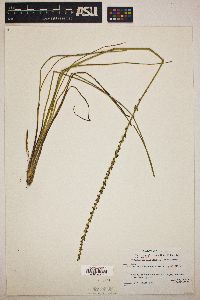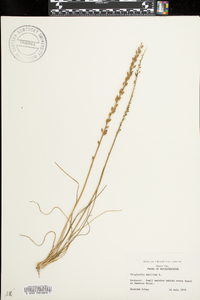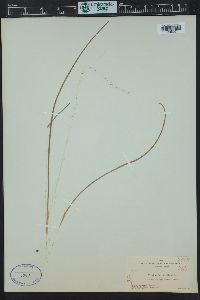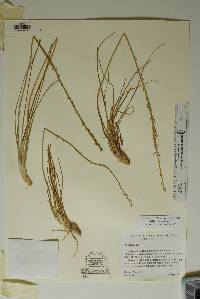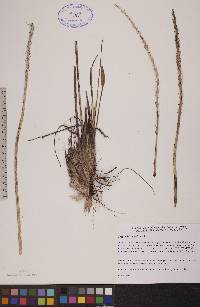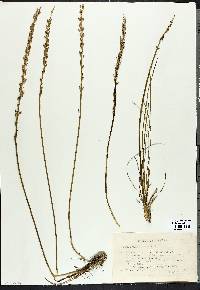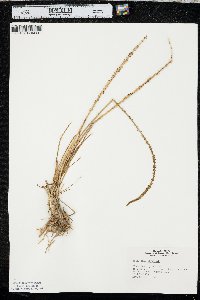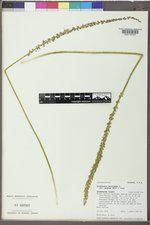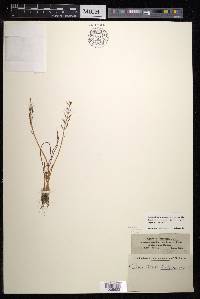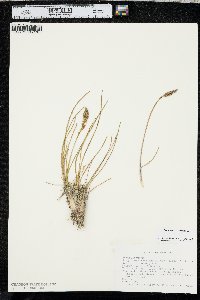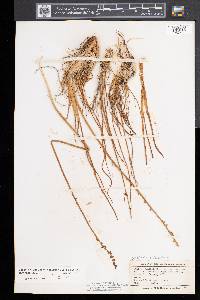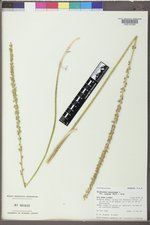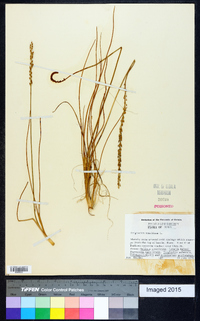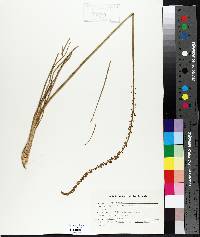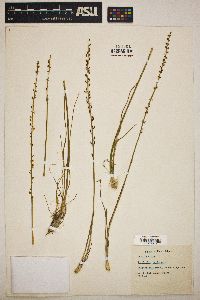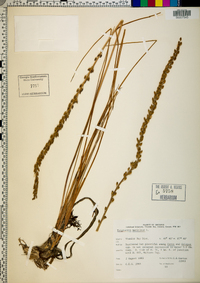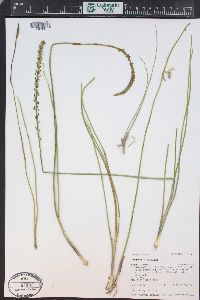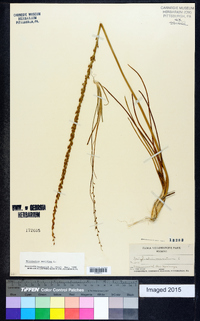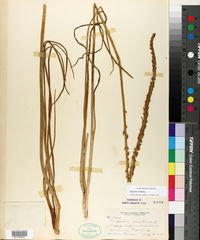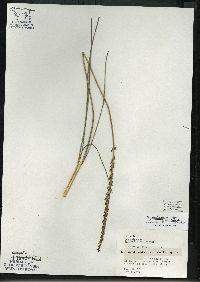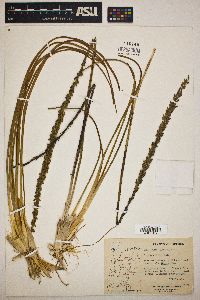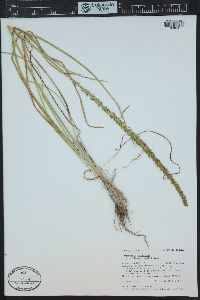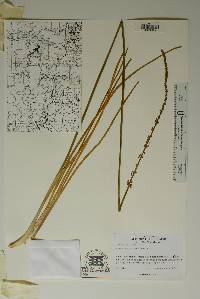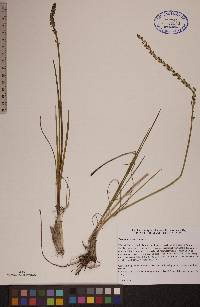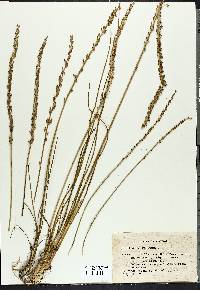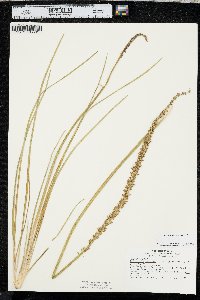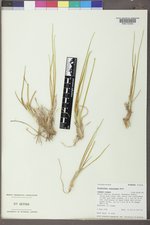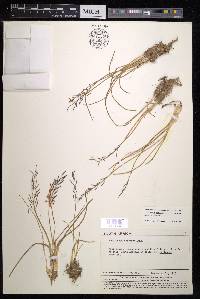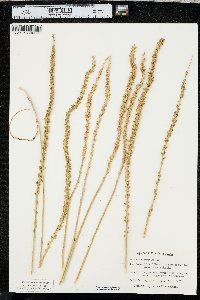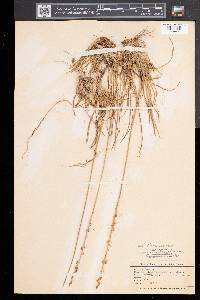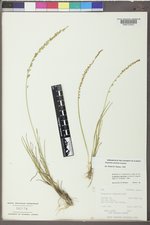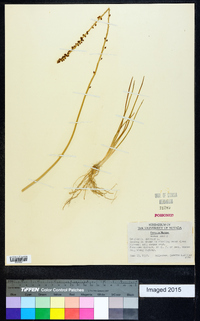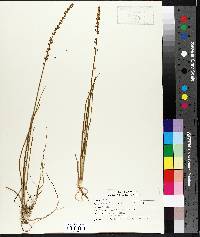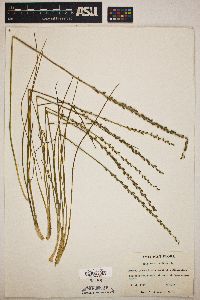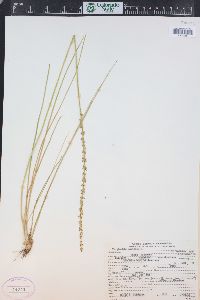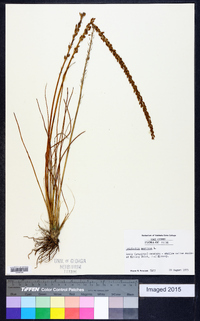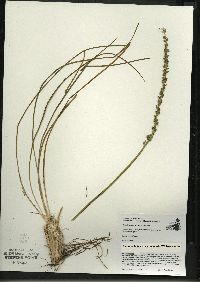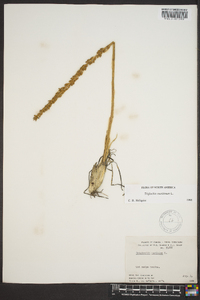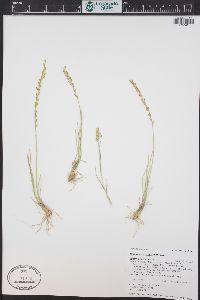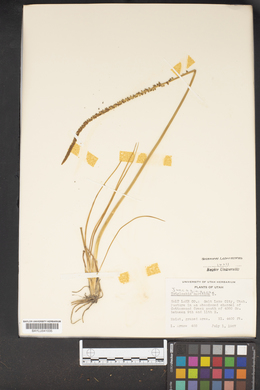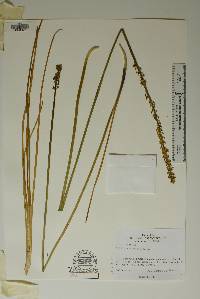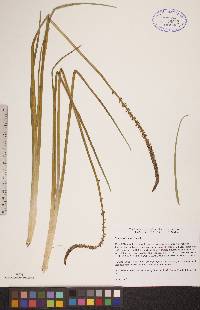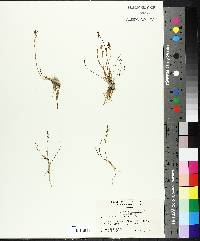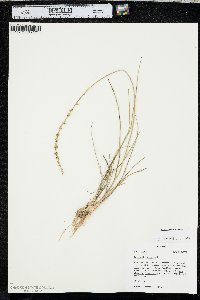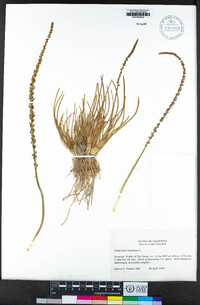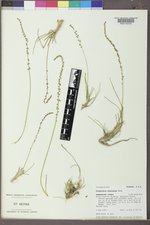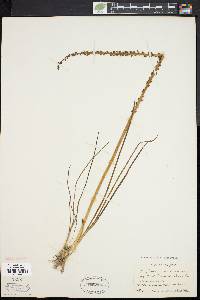Triglochin maritima
|
|
|
|
Family: Juncaginaceae
Seaside Arrow-Grass, more...arrowgrass, seaside arrowgrass, shore arrowgrass
[Triglochin concinnum var. debile (M.E. Jones) J.T. Howell, moreTriglochin debile (M.E. Jones) A.& D. Löve, Triglochin elata , Triglochin elatum Nutt., Triglochin maritima f. multifissa Lepage, Triglochin maritima var. elata , Triglochin maritimum L., Triglochin maritimum var. elatum (Nutt.) A. Gray] |
Plants with fibrous strands of old leaves at base, 3.5--61.5 cm. Leaves erect from sheath, mostly shorter than scape, 2.2--11.5 cm; sheath 0.7--2.5 cm 1--1.8 mm, ligule occasionally hoodlike, apically 2-lobed; blade 0.9--1.4 mm wide, apex obtuse to round. Inflorescences: scape often purple near base, mostly exceeding leaves, 1--16.5 cm 0.5--1 mm; racemes 6--45 cm 1.5--7 mm; pedicel 1--4 0.2--0.3 mm. Flowers: tepals elliptic, 1.3--1.7 0.6--1.4 mm, apex acute; pistils 6, all fertile. Fruits: fruiting receptacle without wings; schizocarps linear to near globose, 2--4.5 1.5--2 mm; mericarps linear to linear-obovate, weakly ridged, 1.5--3.5 0.7--1 mm, beak erect to recurved, 0.2 mm. 2n = 12, 24, 36, 48, 120. Flowering summer--fall. Coastal and mountain marsh areas and moist alkaline meadows; 0--4000 m; This taxon has been separated into Triglochin concinna and T. maritima based upon the lobing of the ligule and the smaller size of the plants of the former (e.g., J. L. Reveal 1977; R. F. Thorne 1993). On a local basis such a separation seems warranted. Examination of the T. maritima complex throughout the Americas, however, reveals continuous variation from small, widely spaced plants with 2-lobed ligules to large, tufted plants with unlobed ligules, including plants with all combinations of those characters. Triglochin maritima is important in livestock management because it is quite toxic: it is a cyanide producer. Perennial semiaquatic herb 20 cm - 0.8 m tall Stem: very short, hidden by the leaves. Leaves: basal, erect, wrapped in a sheath, to 50 cm long and 3 mm wide, semi-circular in cross-section, with a two-lobed sheath tip and blunt to rounded blade tip. Flowers: borne on a terminal spike-like inflorescence 10 - 40 cm long with a lightly ridged main stalk. Each flower has six tiny light green tepals with fine white margins, six stamens, six ovaries and six stigmas. Fruit: maturing when the ovary wall splits vertically into six single-seeded sections (schizocarp), 2 - 5 mm long, egg-shaped to oblong, concave with angled margins (appearing narrowly twelve-winged), having three to six recurved beaks at the tip. The seeds are yellowish brown, 3 mm long, and elliptic. Similar species: Triglochin palustre is similar but spreads by horizontal running stems, is shorter (to 40 cm), and has an unlobed sheath tip. The fruit is longer (6 - 9 mm), linear to club-shaped, essentially beakless, and separates into three sections from the base but remains attached at the tip. Flowering: late May to late September Habitat and ecology: Rare, but found locally along calcareous pond borders and pannes. It is most commonly found somewhat close to Lake Michigan. Occurence in the Chicago region: native Notes: This species produces the toxic compounds triglochinin and taxiphillin, which release hydrogen cyanide when eaten. Livestock are known to poision themselves to death, especially when eating young growth in the spring. Etymology: Triglochin comes from the Greek words treis, meaning three, and glochis, meaning pointed. Maritimum refers to the sea. Author: The Morton Arboretum Allred and Ivey 2012, Heil et al. 2013, Martin and Hutchins, McDougall 1973 Common Name: seaside arrowgrass Duration: Perennial Nativity: Native Lifeform: Graminoid General: Perennial grasslike herbs, 15-100 cm tall, from a short rhizome. Plants consist of a tall flowering stalk emerging from a cluster of basal, grasslike leaves. Vegetative: Leaves sheathing at the base, with a ligule and auricle at the junction of sheath and blade; blades erect, hollow, and round or slightly compressed in cross section, 2 mm wide and 2-12 cm long; ligules entire or nearly so, occasionally hoodlike and 2-lobed. Inflorescence: Racemes spikelike, 10-40 cm long at the top of the leafless flowering stalk up to 100 cm long; flowers small and inconspicuous, sessile, with 6 perianth segments (petal-like structures), about 2 mm long and yellow-green, in 2 series of 3. Fruit a linear to globose schizocarp (dry, indehiscent fruit), 2-4 mm long, which separates into 3 single-seeded segments at maturity. Ecology: Found in mountain marshes and wet alkaline meadows, from 4,500-8,500 ft (1372-2591 m); flowers June-August. Distribution: AK and Yukon, east across CAN to Newfoundland, and south to CA, NM, IA, IN, and RH; south to MEX and C. Amer. Also in Eurasia. Notes: This emergent aquatic, grasslike plant is distingished by its racemes of small flowers, which are mostly sessile or on stalks a only couple millimeters long, and well-spaced along the center stalk of the raceme; the flowers are about the same color as the stalks and only about 2-3 mm long. Also look carefully at the leaf blades, which are mostly round in cross section. This group is somewhat similar to other aquatic grasslike plants, suches as sedges (Cyperaceae) and rushes (Juncus). However it is easily distinguished because the flowers are not clustered into spikelets or spikes, and there are no extra bracts below the flowers or at the base of the inflorescence. Rather each flower is individually attached to the raceme center stalk, and there is often quite a bit of space between flowers. Roots are sometimes submerged underwater at pond margins but the majority of the leaves and stems are sticking out above the water. Tolerates the saline/ alkaline soils of some desert wetlands. Ethnobotany: Leaves and unripe fruit used as food in Europe. Used as a vegetable by several North American indigenous tribes. Contains cyanogenic glycocides, making it toxic, particularly to ruminants such as cattle and sheep. Likely humans who ate it used specialized preparation, similar to Cassava, which also has cyanogenic glycocides. Etymology: Triglochin is from the Greek tri, three, and glochis, a point, alluding to the 3-carpelled fruits; maritima means of the sea. Synonyms: Triglochin concinna, Triglochin debilis, Triglochin concinna var. debilis Editor: AHazelton 2017 Plants 2-8 dm; lvs erect, to 5 dm, 1-3 mm wide; raceme
1-4 dm, the curved erect pedicels 5 mm, decurrent as narrow ridges along the rachis; tep 6, 1-2 mm; stamens 6; ovaries and fr ovoid-oblong, 5 mm at maturity; carpels rounded at the base, each one concave along the back and sharply angled on the margins, the fr-cluster thus appearing narrowly 12-winged; seldom the alternate carpels small and sterile; stigmas radiating, persistent; axis between the carpels very slender; 2n=12, 24, 36, 48, 76, 96, 120, 144. Brackish or fresh marshes and bogs; circumboreal, s. in Amer. to N.J., O., Io., Nebr., and Mex.; Patagonia. May-Aug. (T. elatum, T. gaspense, below high tide from Nf. to ne. Me. and sw. N.S.) Gleason, Henry A. & Cronquist, Arthur J. 1991. Manual of vascular plants of northeastern United States and adjacent Canada. lxxv + 910 pp. ©The New York Botanical Garden. All rights reserved. Used by permission. From Flora of Indiana (1940) by Charles C. Deam Infrequent in a few counties in the lake area. It prefers calcareous soil and grows on the marly borders of lakes and in springy places. I have seen it growing with the next species in marl so strongly alkaline that only a few plants could survive. In such a habitat it will usually be associated with Eleocharis pauciflora. …… Indiana Coefficient of Conservatism: C = 10 Wetland Indicator Status: OBL |
|
|
|

